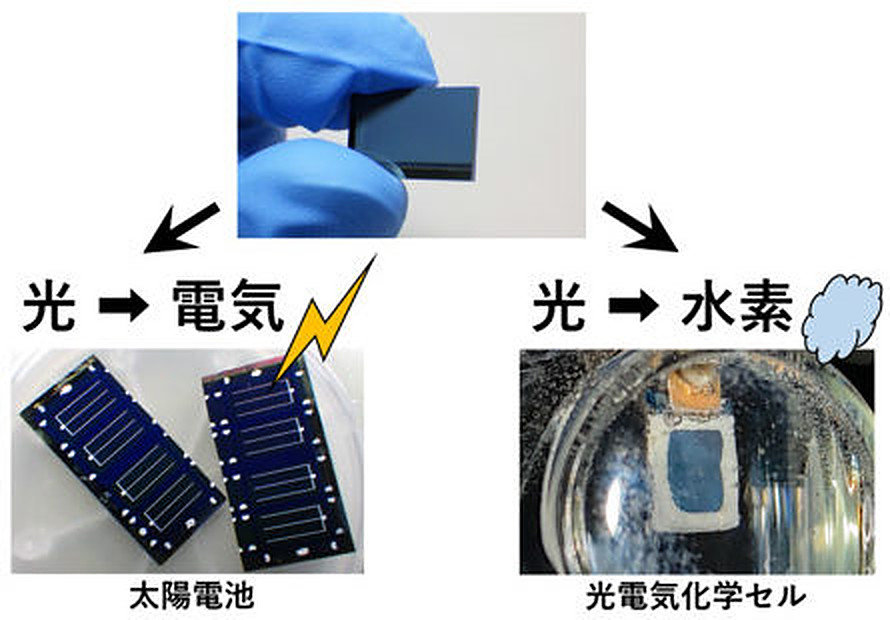Scientists from the National Institute of Advanced Industrial Science and Technology (AIST) in Japan have fabricated a thin-film solar cell based on chalcopyrite (CuGaSe2 or CGSe). They claim that it can be used as a wide-gap to cell in tandem devices or for water-splitting hydrogen generation.
CuGaSe2 has band-gap energy of 1.7 eV. It has been used in solar cells with limited fill factor and open-circuit voltage.
“A voltage equal to the theoretical decomposition voltage of 1.23 V is required for water-splitting hydrogen generation,” the scientists said.
The cell has a half-cell solar-to-hydrogen (HC-STH) conversion efficiency of around 8%. They built it with a CGSe photoabsorber layers with modified p–n heterointerfaces. They grew the film via a conventional three-stage process. They also deposited a cadmium sulfide (CdS) buffer layer with a nominal thickness of 120 nanometers (nm) to 150 nm on a soda lime glass (LGS) substrate via a chemical bath and performed rubidium (Rb) doping during film growth, in order to improve the cell's fill factor and open-circuit voltage.
“Supplying Rb during film growth is more effective than postdeposition treatment (PDT) at boosting the ternary CGSe photovoltaic performance,” the scientists explained, noting that they also equipped the cell with anti-reflection coating (ARC).
Through standard test conditions, the scientists found that the champion cell achieved a power conversion efficiency of 11.05%, an open-circuit voltage of 0.960 V, a short-circuit current density of 15.9 mA cm−2, and a fill factor of 72.4%.
“We demonstrated here that the interface recombination could be reduced by controlling the copper-deficient phases present on the CGSe film surface,” they said. “The simultaneous achievement of high open-circuit voltage and fill factor by a CGSe/CdS heterointerface-based solar cell is also a notable result, although both values and the photovoltaic efficiency could be improved further.”
The academics described the cell technology in “Enhanced Performance of Ternary CuGaSe2 Thin-Film Photovoltaic Solar Cells and Photoelectrochemical Water Splitting Hydrogen Evolution with Modified p–n Heterointerfaces,” which was recently published in Advanced Materials Interfaces.
This content is protected by copyright and may not be reused. If you want to cooperate with us and would like to reuse some of our content, please contact: editors@pv-magazine.com.




3 comments
By submitting this form you agree to pv magazine using your data for the purposes of publishing your comment.
Your personal data will only be disclosed or otherwise transmitted to third parties for the purposes of spam filtering or if this is necessary for technical maintenance of the website. Any other transfer to third parties will not take place unless this is justified on the basis of applicable data protection regulations or if pv magazine is legally obliged to do so.
You may revoke this consent at any time with effect for the future, in which case your personal data will be deleted immediately. Otherwise, your data will be deleted if pv magazine has processed your request or the purpose of data storage is fulfilled.
Further information on data privacy can be found in our Data Protection Policy.